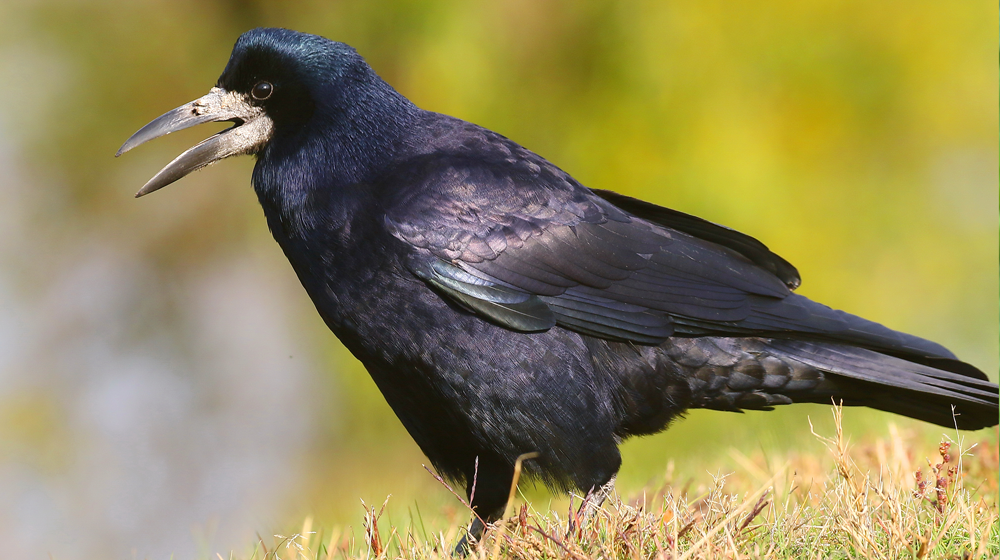-
-
-
-
-
-
-
-
-
-
Rooks
-
-
-
-
-
-
-
-
-
-
-
-

Rooks
| Common name: | Rook |
|---|---|
| Scientific name: | Corvus frugilegus |
| Management programme: | Eradication |

Report this pest!
If you think you have seen this pest, we need to know. Please report it.
Rooks are part of the crow family and are large birds with glossy, purplish-black feathers. They were introduced into New Zealand between 1862 and 1873 to control insect pests, but like many other introduced species, their populations flourished and spread in some areas.
These intelligent birds can form large flocks (called parliaments) and have the potential to inflict massive damage to Otago's crops, pastures, invertebrate communities, and even native nesting birds. Rooks are attracted to recently cultivated paddocks and will feed on newly sown crops, causing significant damage. Rooks can also have negative impacts on soil invertebrate communities and native birds, which rely on these as a food source.
In Otago, control efforts have reduced rook numbers from several hundred at their peak to a handful of individuals currently. No chicks have been reported in the last few years, meaning the rook population may now be non-breeding. Rooks have previously been spotted in Māniatoto / Maniototo, Strath Taieri, Middlemarch, Macraes, and South Otago around Clinton and Clydevale.
- Size: Rooks are large birds, with an adult wingspan of 81 to 99 centimetres and weighing 280 to 340 grams.
- Appearance: A purplish-black bird with a prominent, powerful bill. As they mature, they develop a greyish-white patch of scaly skin around the base of their pale beak.
- Signs: During breeding (August to January), all birds live in large communal colonies called rookeries; they often come back to sites they have used in previous breeding seasons. Rooks travel up to 20 kilometres daily looking for food — from either rookeries or communal winter roosts.
- Similar species: Magpies, blackbirds and starlings can appear similar; however, rooks can be distinguished by their large size, pronounced beak and distinctive ‘kaah’ call.
- Habitat: Rooks in New Zealand typically live in open habitats such as pastures, croplands and orchards, nesting in rookeries in tall trees such as eucalyptus, pine and macrocarpa. They are most concentrated in areas with suitable nesting trees and extensive field crops.
To get rid of the small, localised populations in Otago, rooks are in the eradication programme of the Otago Regional Pest Management Plan (2019–2029). The goal is to reduce the number of rooks in Otago to zero over the next 10 years to prevent negative effects on economic wellbeing and the environment.
Unless you are under the instruction or supervision of an Authorised Person (for the purposes of our pest plan, an Authorised Person is a warranted officer under the Biosecurity Act, for example, one of our biosecurity officers), you cannot:
- poison, capture or trap any rook
- discharge any firearm at any rook
- discharge any firearm at or within 500 metres of any tree containing a rookery
- damage, disturb or interfere in any way with a rookery.
The purpose of this rule is to prevent humans disturbing rooks and hindering control. The birds are wary, disperse easily, and require a settled environment for successful control.
Report this pest!
If you think you have seen this pest, we need to know. Please report it.
ORC controls rooks from September to November each year. The success of this control programme relies on the public reporting any rook sightings to us so we can pinpoint where they are gathering, feeding and nesting in rookeries.
There is no charge to the landowner for rook control in Otago.

November 2019
Otago Regional Council
ISBN 978-0-908324-57-6
PDF | 5 MB
The Otago Regional Pest Management Plan focuses on dealing with harmful pests that impact our environment, economy, and communities. It identifies species like rabbits, wallabies, gorse, and wilding conifers that cause problems on our land. Guided by the Biosecurity Act 1993, the plan works with stakeholders to set rules and controls for managing pests. Through consultation, it aims to protect our region's unique ecosystems and species from the damage caused by these invasive organisms.

November 2025
PDF | 471 KB
Rooks are part of the crow family and are large birds with glossy, purplish-black feathers. These intelligent birds can form large flocks (called parliaments) and have the potential to inflict massive damage to Otago’s crops, pastures, invertebrate communities, and even native nesting birds.
orc.govt.nz/rooks









